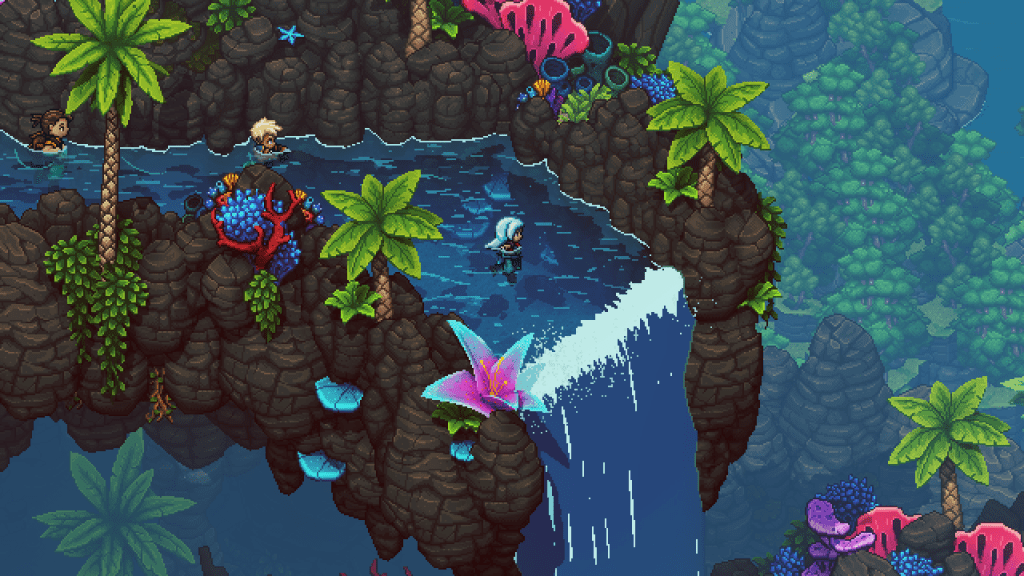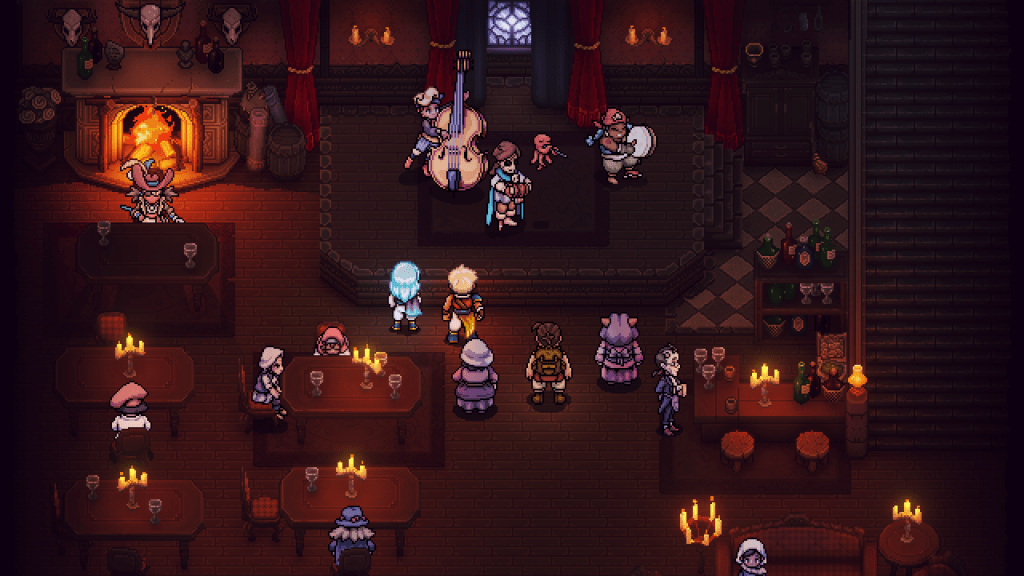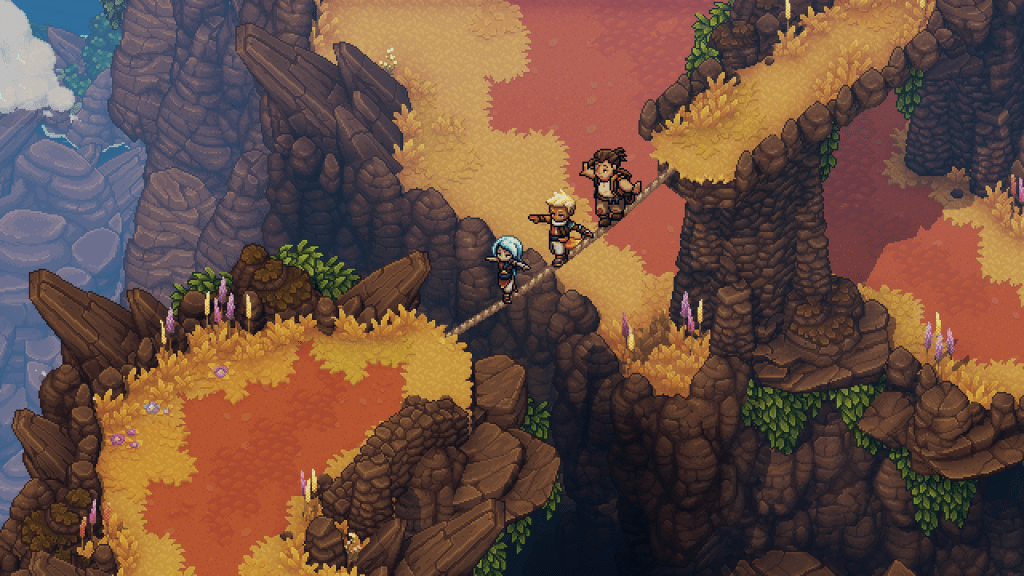Sea of Stars may look and feel like an old-school RPG, but it’s story, music, and overall approach make for a stunning title for modern gamers to enjoy.
From the moment I saw the first trailer for Sea of Stars, I had a feeling I was looking at something special. This is a game designed to look like the classic pixelated RPGs of the 90s and early 2000s while still playing with all the vibrancy of a modern game. In this, Sea of Stars succeeds with flying colors.
The Story
Sea of Stars is a prequel to The Messenger, but while both games are set in the same universe, don’t worry about having to play the latter game first. Sea of Stars takes inspiration from 90s RPG games and is played entirely differently from The Messenger.
Sea of Stars
Developed by: Sabotage Studios
Platforms: Windows, Nintendo Switch, Playstation 4, Playstation 5 [Reviewed on], Xbox One, Xbox Series X/S
Release date: August 29, 2023
In this game, the player controls Valere and Zale, two Solstice Warriors who can wield powers fueled by the Moon and Sun respectively. After completing their training, Valere and Zale are dispatched to Wraith Island to help take down a great evil. However, as with any great RPG, the situation is not nearly as straightforward as it seems.
One thing Sea of Stars does very well is getting you to emotionally invest in the characters. Valere, Zale, and all the characters you meet all come across as fully-fleshed out people. This is helped along by the well-written dialogue, which quickly brings you into the story. Another detail that helps bring the story to life are the beautiful graphics. The retro style pixel graphics are gorgeous. The colors fairly pop off the screen and between the gameplay are fully animated cinematic scenes that make you feel like you’ve dropped straight into an anime series.

The Gameplay
Sea of Stars is built around a combination of exploration and combat as Valere and Zale go on their adventure as Solstice Warriors. The game makes sure to reward the player if they go exploring. For example, if there are two paths to choose from, the odds are good that one of the paths will lead the player to a treasure chest with a reward. In fact, I highly recommend hunting down as many chests as you can find, as they are filled with all kinds of rewards, including extra gold and armor that can boost the character’s stats, something that becomes very important when combat comes around.
One of the best parts of Sea of Stars is there are so many ways to explore the game world! This game lets you do just about anything: you can run around, climb walls, jump gaps and creep along ledges, but I think my favorite part might be swimming. Swimming in Sea of Stars is so much fun, especially when you get to slide down waterfalls (more games should have that as an option). Another fun option is climbing on roofs and walking on tight ropes. The game designers really thought of every last way to travel when they made this game.
Speaking of combat, the combat system in Sea of Stars is fairly straightforward. The game utilizes turn based combat, with a timer over the enemies heads to indicate how many turns are left until that particular enemy makes a move. Most of the combat you’ll use throughout the game is taught in the prologue. There are only a few basic options, no hard combos to memorize, which leaves the player free to focus on the story.
Additionally, saving the game is easy and convenient. While Sea of Stars isn’t a difficult game, it’s still wise to save every chance you get, just in case a combat encounter goes sideways. The game thoughtfully includes a save area at the beginning of every new area you encounter. There are usually more scattered throughout, which makes it easy to pick a stopping point if you’re done gaming for the day.

Sea of Stars doesn’t have difficulty settings per se, but it does feature a number of Relics you can acquire during gameplay that make combat easier. Once enabled, they do help quite a bit. Essentially, each Relic toggles or outright shifts a feature that is related to combat. These can be found in various markets the player comes across during the game.
Most, but not all of the Relics can be disabled at any time, leaving the player free to shift the difficulty whenever they’d like. This is definitely a different way of shifting the difficulty in a game. Letting the player choose which specific settings they want changed is a layer of player agency I hadn’t thought of much before but it really comes in handy.
A Minor Issue
One combat-related issue that I did encounter early on in Sea of Stars had to do with the boss battles. Fighting the regular monsters is easy enough and the game’s basic combat is straightforward and easy to grasp. All of this seemed to go out the window once you start to encounter the major bosses.
After breezing through combat in the prologue, I was stunned when the first boss battle took three separate attempts. After further experimentation though, I realized that the game is somewhat designed to force you to learn from failure. In other words, if you’re encountering a boss and getting destroyed, you likely need to adjust your approach. An early boss kept destroying me until I finally switched up my attack and suddenly they went from unbeatable to fairly manageable. So, if you feel stuck fighting a boss, don’t get frustrated; you probably just need to shift your attack.
Another minor issue that bothered me throughout gameplay was the lack of health bars for the boss enemies. Even with the difficulty settings eased up, boss fights in Sea of Stars are tough to get through. Not having a health bar to track how effective (or not) your attacks are is incredibly frustrating. To be fair, there are some animation “clues” that let you know when a major enemy is getting weaker, but that’s not nearly as satisfying as watching an enemy’s health bar slowly tick down as the battle progresses.

The Music
While most of Sea of Stars is amazing, it’s the music that really helps to tie it all together and bring the game to the next level. It’s not a huge symphonic score like you might hear in God of War, but it really doesn’t need to be that. This is the type of game we all dreamed of playing when we were kids and that’s how the music makes you feel, like a kid again.
What you have in Sea of Stars is an enchanting musical score that helps you get lost in exploring the world. The music is perfectly suited to each area you go to, from a jaunty tune while exploring the port of Brisk, to an eerie melody while exploring a haunted forest.
In conclusion, Sea of Stars is by far one of the best RPGs to come out this summer and proves that the old-school RPG genre is far from dead. While there are some minor issues and frustrations with combat, that doesn’t take away from the sheer joy to be had in exploring this beautiful world. Once you get started, you won’t want to stop…And those are the best kinds of games.

